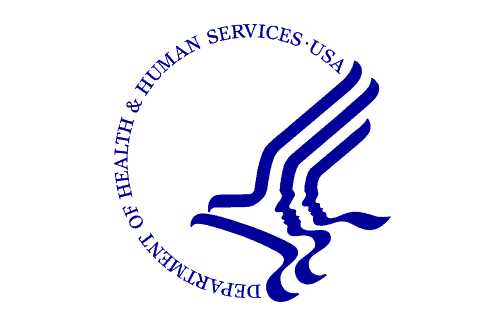U.S. Department of Health and Human Services (HHS) Definition
The U.S. Department of Health and Human Services (HHS) provides a comprehensive definition of health insurance. According to HHS, health insurance is a contract between an individual and an insurance company that provides financial protection and coverage for medical expenses.
Health insurance helps individuals and families pay for medical services, including doctor visits, hospital stays, prescription medications, and preventive care. It is designed to protect individuals from high medical costs and ensure access to necessary healthcare services.
Key Terms:

Network: Health insurance plans often have a network of healthcare providers, including doctors, hospitals, and specialists, with whom they have negotiated discounted rates. In-network providers typically offer lower out-of-pocket costs for policyholders.
Out-of-Pocket Costs: These are the expenses that individuals must pay for healthcare services that are not covered by their insurance plan. Out-of-pocket costs can include deductibles, copayments, and coinsurance.
Premium: The premium is the amount that individuals pay on a regular basis, usually monthly, to maintain their health insurance coverage. It is a fixed cost that is separate from any out-of-pocket expenses.
Qualified Health Plan: A qualified health plan is a health insurance policy that meets certain standards set by the Affordable Care Act (ACA). These plans provide essential health benefits and meet specific requirements for coverage and consumer protections.
Subsidy: A subsidy is a financial assistance provided by the government to help individuals and families afford health insurance coverage. Subsidies are based on income and are intended to make insurance more affordable for those who qualify.
| Term | Definition |
|---|---|
| Network | The network refers to the group of healthcare providers, such as doctors, hospitals, and clinics, that have agreed to provide services to members of a specific health insurance plan. It is important to understand the network of a health insurance plan, as going out of network may result in higher out-of-pocket costs. |
| Out-of-Pocket Costs | Out-of-pocket costs are the expenses that individuals must pay for healthcare services that are not covered by their health insurance plan. These costs can include deductibles, co-payments, and coinsurance. It is important to review the out-of-pocket costs of a health insurance plan to understand how much you may need to pay for medical services. |
| Premium | The premium is the amount of money that an individual or employer pays to an insurance company to purchase a health insurance plan. It is typically paid on a monthly basis. The premium may vary depending on factors such as age, location, and the level of coverage provided by the plan. |
| Qualified Health Plan | A qualified health plan is a health insurance plan that meets the requirements set forth by the Affordable Care Act (ACA). These plans provide essential health benefits and meet certain standards for coverage and consumer protections. Individuals who purchase a qualified health plan may be eligible for subsidies to help lower their premium costs. |
| Subsidy | A subsidy is a financial assistance provided by the government to help individuals and families afford health insurance coverage. The amount of the subsidy is based on factors such as income and family size. Subsidies can help lower the cost of premiums and out-of-pocket expenses for those who qualify. |
Definition of Network
In the context of health insurance, a network refers to a group of healthcare providers, such as doctors, hospitals, and clinics, that have agreed to provide services to individuals covered by a specific health insurance plan. The network can be exclusive, meaning that individuals must receive care from providers within the network in order for it to be covered by their insurance plan, or it can be more flexible, allowing individuals to seek care from providers outside of the network, but at a higher cost.
Health insurance plans often negotiate contracts with healthcare providers to establish a network. These contracts outline the terms and conditions of the relationship between the insurance plan and the providers, including reimbursement rates and quality standards. By establishing a network, insurance plans can ensure that their members have access to a wide range of healthcare services at negotiated rates.
There are different types of networks, including Health Maintenance Organizations (HMOs), Preferred Provider Organizations (PPOs), and Exclusive Provider Organizations (EPOs). Each type of network has its own rules and restrictions regarding the choice of healthcare providers. For example, HMOs typically require individuals to select a primary care physician who acts as a gatekeeper for accessing specialized care, while PPOs offer more flexibility in choosing providers but may require individuals to pay higher out-of-pocket costs for care received outside of the network.
Benefits of a Network
Having a network can offer several benefits to individuals with health insurance coverage. These include:
- Access to a wide range of healthcare providers: By being part of a network, individuals can choose from a larger pool of doctors, specialists, hospitals, and other healthcare facilities.
- Cost savings: Insurance plans negotiate discounted rates with network providers, which can result in lower out-of-pocket costs for individuals.
- Coordinated care: Networks often have systems in place to ensure that individuals receive coordinated and integrated care, which can lead to better health outcomes.
- Streamlined claims process: When individuals receive care from network providers, the claims process is typically smoother and more efficient, reducing the administrative burden.
Considerations when Choosing a Network
When selecting a health insurance plan, it is important to consider the network and its implications. Some factors to consider include:
- Provider availability: Check if the network includes healthcare providers that you trust and prefer.
- Geographical coverage: Ensure that the network has providers in your desired geographic area, especially if you frequently travel or live in a rural area.
- Referral requirements: If the network has referral requirements, determine if they align with your healthcare needs and preferences.
- Out-of-network coverage: Understand the out-of-network coverage options and associated costs, in case you need to seek care from providers outside of the network.
By carefully considering the network when choosing a health insurance plan, individuals can ensure that they have access to the healthcare providers and services they need, while also managing their costs effectively.
Definition of Out-of-Pocket Costs
Out-of-pocket costs refer to the expenses that individuals have to pay for their healthcare services, medications, and treatments, which are not covered by their health insurance plans. These costs include deductibles, copayments, and coinsurance.
Deductibles: A deductible is the amount of money that individuals have to pay out of their own pocket before their health insurance plan starts covering the costs. For example, if a health insurance plan has a $1,000 deductible, individuals will have to pay the first $1,000 of their healthcare expenses before the plan starts paying.
Coinsurance: Coinsurance is the percentage of the healthcare costs that individuals have to pay after meeting their deductible. For example, if a health insurance plan has a 20% coinsurance, individuals will have to pay 20% of the healthcare costs, while the insurance plan will cover the remaining 80%.
It is important for individuals to understand their out-of-pocket costs when choosing a health insurance plan. These costs can vary depending on the plan, and they can have a significant impact on individuals’ healthcare expenses. By knowing their out-of-pocket costs, individuals can better budget for their healthcare needs and make informed decisions about their healthcare services and treatments.
Definition of Premium

Importance of Premium
The premium is a crucial component of any insurance policy as it helps to fund the insurance company’s operations and cover the costs of providing coverage. It is the primary source of revenue for insurance companies and allows them to pay out claims when policyholders experience covered losses or damages.
Factors Affecting Premium
Several factors influence the premium amount for an insurance policy. These factors include:
Type of Coverage
The type of coverage being purchased plays a significant role in determining the premium. Different types of insurance, such as health insurance, auto insurance, or home insurance, have varying levels of risk and coverage, which affects the premium amount.
Level of Coverage
Individual or Business Risk Profile
The risk profile of the insured party is another crucial factor in determining the premium. Insurance companies assess the risk associated with insuring an individual or a business based on various factors such as age, health condition, driving record, claims history, and the nature of the business. Higher-risk individuals or businesses may be charged higher premiums to compensate for the increased likelihood of claims.
Payment of Premium
To maintain coverage, policyholders must pay their premiums on time. Failure to pay the premium can result in a lapse in coverage, meaning the policyholder will no longer be protected by the insurance policy. Insurance companies usually provide various payment options, including electronic funds transfer, credit card payments, or traditional check payments.
Conclusion
Definition of Qualified Health Plan
A qualified health plan (QHP) is a type of health insurance plan that meets certain standards set by the U.S. Department of Health and Human Services (HHS). These standards are designed to ensure that individuals and families have access to comprehensive and affordable coverage.
Key Features of a Qualified Health Plan
A qualified health plan must meet several key features to be considered compliant with the Affordable Care Act (ACA) regulations. These features include:
- Essential Health Benefits: A QHP must cover a set of essential health benefits, which include services such as hospitalization, prescription drugs, preventive care, and maternity care.
- Minimum Value: A QHP must have an actuarial value of at least 60%, meaning that it covers at least 60% of the total average costs of covered benefits.
- Network Adequacy: A QHP must have a network of doctors, hospitals, and other healthcare providers that is sufficient to meet the healthcare needs of its enrollees.
- Cost Sharing Limits: A QHP must have limits on out-of-pocket costs, such as deductibles, copayments, and coinsurance, to protect individuals and families from excessive financial burden.
- Premium Affordability: A QHP must be affordable for individuals and families, with premium costs that are within specified limits based on their income.
Benefits of Choosing a Qualified Health Plan
Choosing a qualified health plan offers several benefits:
- Comprehensive Coverage: QHPs provide coverage for a wide range of essential health services, ensuring that individuals and families have access to the care they need.
- Financial Protection: QHPs have cost-sharing limits that protect individuals and families from high out-of-pocket costs, providing financial security in case of unexpected medical expenses.
- Access to Provider Networks: QHPs have networks of healthcare providers, giving individuals and families access to a wide range of doctors, hospitals, and specialists.
- Subsidies and Financial Assistance: Depending on their income, individuals and families may be eligible for subsidies and financial assistance to help reduce the cost of their QHP premiums.
Overall, a qualified health plan is designed to provide individuals and families with comprehensive and affordable health insurance coverage, ensuring that they have access to the care they need while protecting them from excessive financial burden.
Definition of Subsidy

A subsidy is a financial assistance provided by the government or an organization to help individuals or businesses afford certain goods or services. In the context of health insurance, a subsidy is a form of financial aid that helps individuals and families pay for their health insurance premiums.
Subsidies are typically provided to individuals and families with low to moderate incomes who cannot afford the full cost of health insurance. The amount of the subsidy is based on a person’s income and household size, and it is designed to reduce the out-of-pocket costs associated with health insurance.
The amount of the premium tax credit is based on a person’s income and the cost of health insurance in their area. It is designed to limit the amount of money individuals and families have to spend on their health insurance premiums, making coverage more affordable.
In addition to premium tax credits, the ACA also introduced cost-sharing reductions (CSRs) as a form of subsidy. CSRs help lower the out-of-pocket costs, such as deductibles, copayments, and coinsurance, for individuals and families with low incomes who purchase a silver-level health insurance plan through the Marketplace.
Subsidies play a crucial role in making health insurance more accessible and affordable for individuals and families who may otherwise struggle to afford coverage. By reducing the financial burden of health insurance premiums and out-of-pocket costs, subsidies help ensure that more people have access to the healthcare services they need.
| Key Points |
|---|
| – A subsidy is a form of financial aid that helps individuals and families pay for their health insurance premiums. |
| – Subsidies are typically provided to individuals and families with low to moderate incomes who cannot afford the full cost of health insurance. |
| – Subsidies help make health insurance more accessible and affordable for individuals and families, reducing the financial burden of premiums and out-of-pocket costs. |

Emily Bibb simplifies finance through bestselling books and articles, bridging complex concepts for everyday understanding. Engaging audiences via social media, she shares insights for financial success. Active in seminars and philanthropy, Bibb aims to create a more financially informed society, driven by her passion for empowering others.
